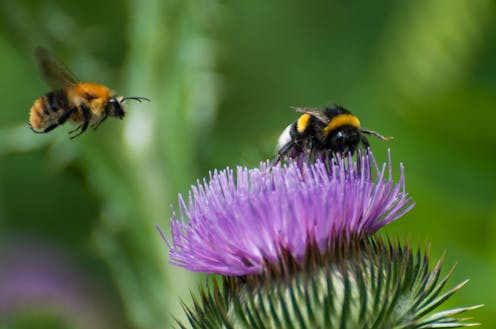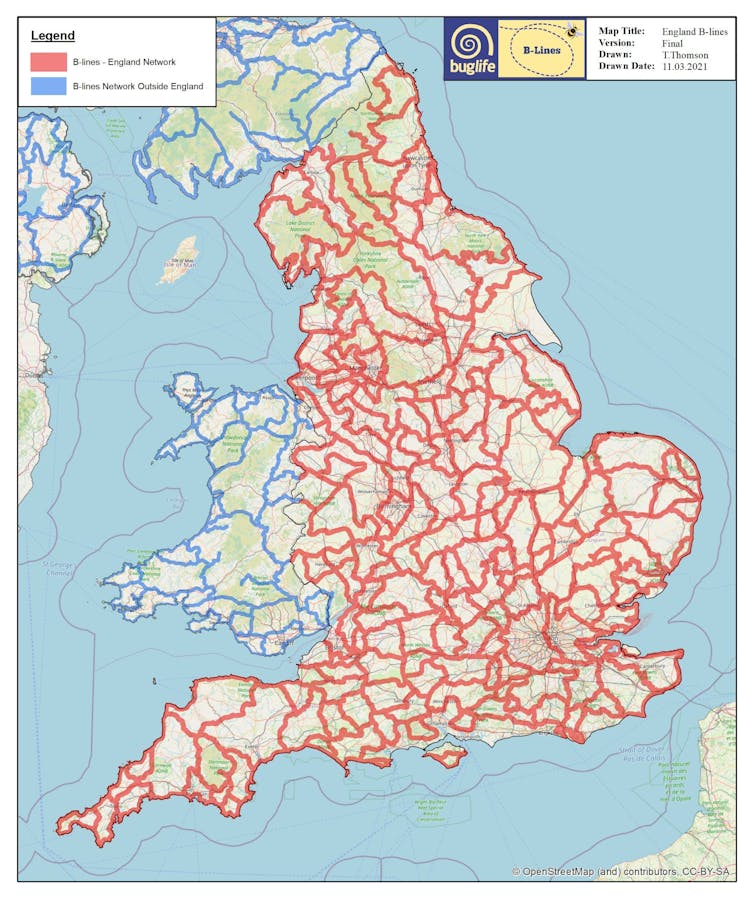
Hundreds of miles of bee highways are being created across the UK to halt the drastic decline in the insect’s population.
The public is currently being encouraged to leave their lawns untouched for a month, to help provide more habitats for insects as part of No Mow May.
In the UK, there are hundreds of species of bee, as well as thousands of other pollinating insects, such as butterflies, moths, bats and birds. However, 40% of them are at risk of becoming extinct.
Crucially these species help provide the food we eat, the flowers we see and the vast biodiversity on the planet. Bees transfer pollen between plants, which is needed for crops to grow and produce food. Therefore, a decline in the number of bees is alarming. This rapid drop in bee numbers is due to several factors including the loss and fragmentation of habitats, particularly wildflower patches. Large areas of wild meadows have been turned over to crops, reducing the availability of the wildflowers and plants that bees need for food. In addition, large areas of open land have been used to build houses as towns and cities expand.
The B-Lines project plans to help tackle this by connecting existing wildflower areas together. This makes it easier for bees and other pollinators to travel through our cities, towns and countryside. Bees can become being isolated and unable to fly if there are no plants they can get food from.
To create this large network, the project used maps to identify wildflower-rich areas, such as grasslands and heathland. A combination of computer modelling and local conservationists, landowners, stakeholders and local authorities were used to identify places with and without bee-friendly areas.
The highways are about 3km wide and connect wildflower areas together by creating and restoring wildflower-rich patches. Wildflower seeds are planted and growth is encouraged by restricting mowing. The highways are needed because bees have a limited flight capacity to find food, so patches need to be close together for the bees to reach them. Think of these patches as stepping stones, shortening the distance between the richest wildflower areas, so pollinators do not have to travel as far to find food. Councils are encouraging the public to get involved, by providing free wildflower seeds, and campaigning to stop the public mowing their lawns. Wildflower meadows are also being planted in parks and alongside roads.
Read more: Bees: how important are they and what would happen if they went extinct?
The project has already restored and created 1,500 hectares of wildflower habitat around the UK. The long term goal of the project is to create 150,000 hectares of new wildflower areas out of habitats less suited to bees. When a group or individual creates or restores a new wildflower patch they are encouraged to add the patch to the B-Lines map to help track the progress of the project. The network map is publicly available and the public can look at where their nearest wildflower patch is.
A map of the bee highway

Wildflowers are important sources of nutrients for pollinating species. The nectar from these plants is their main source of energy, while pollen is needed for protein.
Restoring wildflower habitats will be beneficial to bees, while also providing habitats for spiders, birds, small mammals and plants. They should also help to buffer the effects of climate change. Climate change is causing weather patterns to change, which may mean an animal is no longer suited to their current habitat. When temperatures rise bumble bee nests can overheat leaving bees less able to fly. Higher connectivity between habitat patches will enable animals to travel between patches to areas with a more suitable climate.
There will be other benefits to this project. Farmers will see increased populations of bees and other insects, which should increase food crops.
Bee-friendly areas disappeared
Increased urbanisation and technology use means that many people are becoming more disconnected from wildlife. Helping with a local B-Lines project could also help reconnect many, particularly young people, with nature. Getting outside, and learning about nature can be a brilliant way to disconnect from everyday stresses and to help relax.
While there are many benefits, there are also some risks. Planting patches of wildflowers provides a very concentrated source of food for bees and other pollinating insects and therefore these patches may become very crowded. It is very common for diseases to be passed between bees on flowers where they are concentrated in a small area. This particularly happens during the summer when there are a large numbers looking for food.
We do not know yet if disease transmission will increase, or even if this will only occur for a small number of diseases. Therefore, it is important for bees to be regularly monitored for signs of disease. Particularly, because some diseases can make them more vulnerable to other stressors they are exposed to, such as pesticides.
The creation of bee highways around the country is one step forward in tackling the insect population crisis. They should have far-reaching benefits on the production of food crops, and for a large variety of wildlife.
Morgan Morrison receives funding from EU SAFEGUARD PROJECT (HORIZON 2020).
Hannah Wolmuth-Gordon Royal Holloway University London. She receives funding from Royal Holloway University London.
This article was originally published on The Conversation. Read the original article.







